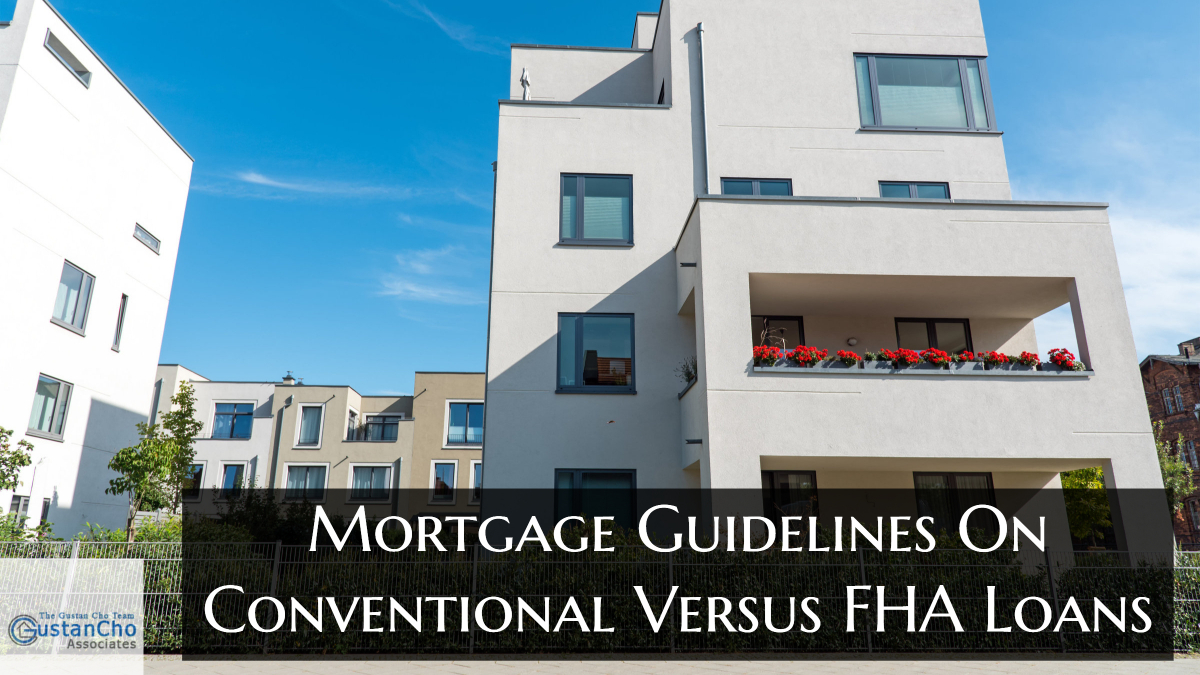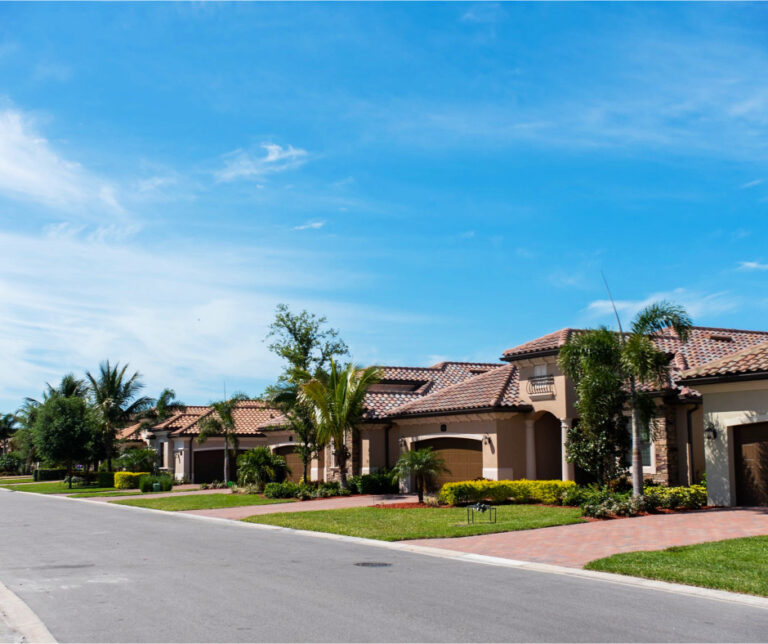Mortgage Guidelines On Conventional Versus FHA Loans
This article will cover the mortgage guidelines on conventional versus FHA loans. We will compare and contrast the differences and benefits of the mortgage guidelines on conventional versus FHA loans. Mortgage guidelines on conventional versus FHA loans are different. Sometimes, a home buyer may need a Conventional versus an FHA loan. One of the biggest reasons a home buyer needs to go with a Conventional versus an FHA loan is when they need a higher mortgage loan limit than the standard FHA Loan Limit of $427,030.
Unless the property buyers are purchasing is located in a high-cost area classified as a high-cost area by HUD, the maximum FHA Loan Limit in most areas in the United States is capped at $427,030. Chicago and its surrounding suburbs of Will County, Lake County, Cook County, McHenry County, Kane County, and DuPage County have higher FHA Loan Limits and are capped at $427,030. In this article, we will discuss and cover Mortgage Guidelines On Conventional Versus FHA Loans.
Mortgage Guidelines on Conventional Versus FHA Loans In California
Many areas of California are classified as high-cost areas and have FHA Loan Limits of $1,089,300. California has one of the highest home prices in the nation. Average mortgage loans in the United States is $489,400. However, in California, average residential mortgage loans average $765,000. Miami-Dade County, Palm Beach County, and Broward County are counties of Florida where the FHA Loan Limits are much higher than the rest of the state of Florida.
FHA Versus Conforming Loan Limits
In general, the loan limit on conforming loans are substantially higher than FHA loans. 2023 conforming loan limit in standard low-cost areas is capped at $726,200. High-balance conforming loans in high-cost areas is capped at $1,089,300. HUD, the parent of FHA, increased 2023 FHA loan limit to $427,030 and matched the high-balance conforming loan limit on FHA Jumbo loans to $1,089,300 in high-cost areas.
Due to skyrocketing home values and not to price homebuyers out of the market, the FHFA and HUD both have been increasing Conforming and FHA loan limits for seven years in a row. Home prices are increasing year after year with no sign of a slowdown.
HUD, the United States Department of Housing and Urban Development, is the parent of the Federal Housing Administration or FHA.HUD sets the FHA Loan Limits. FHA Loan Limits can change without extended notice by FHA and often does. HUD can either increase or decrease the FHA Loan Limits in all areas of the United States. For homebuyers who need a higher mortgage loan limit than the FHA Loan Limits, then they may have to opt to go with a Conventional loan.
Loan Limit Mortgage Guidelines on Conventional Versus FHA Loans
Fannie Mae and Freddie Mac are the two mortgage giants that set the lending requirements of conventional loans. The Federal Housing Finance Agency sets the annual Conventional Loan Limits throughout the United States: Unless the county is classified as a high-cost area, Fannie Mae and Freddie Mac maximum conforming loan limits is capped at $726,200.
Conventional and FHA high-balance mortgage loans have the same lending requirements as standard conventional and FHA loans. However, FHA Jumbo lenders and Conforming high-balance mortgage lenders may have lender overlays on high-balance FHA and Conforming loans.
Many home buyers who need a higher loan limit than the standard FHA loan limit cap of $427,030 will need to go with a Conventional versus an FHA loan. Conforming and FHA high-balance mortgage loans on single-family homes are capped at $1,089,300 in high-cost areas.
Updated Mortgage Guidelines on Conventional Versus FHA Loans

Conventional loans have tougher mortgage lending requirements than FHA loans. Fannie Mae and Freddie Mac require a minimum credit score of 620 FICO Credit Score Versus FHA requiring a minimum of a 580 FICO to qualify for an FHA loan. Conventional loans have a maximum debt-to- income ratio requirements of 50% DTI. The minimum credit score to get an FHA loan is 500 FICO.
The team at Gustan Cho Associates can help borrowers to boost their credit scores so they can meet the minimum conforming lending guidelines. It does take a little time, but we have the latest up to date FICO simulator and can do a rapid rescore for borrowers in a rush to get pre-approved.
The minimum credit score on conventional loans at 620 FICO is not all that high. Rates on conforming loans are much more credit score sensitive versus FHA loans. However, due to the larger loan amount, homebuyers may need to boost their credit scores to get an approve/eligible per automated underwriting system if they need a higher loan amount to purchase their home.
Debt-To-Income Ratio Mortgage Guidelines on Conventional Versus FHA Loans
HUD will allow up to a 46.9% front-end and 56.9% back-end DTI to qualify for an FHA mortgage loan. The down payment requirements for Conventional loans are normally 5% down payment. If you are a first-time homebuyer, you can put a 3% down payment on a home purchase.
Fannie Mae and Freddie Mac agency guidelines will allow 3% down payment conventional loans if the home buyer has not had any interest in homeownership in the past three years. HUD only requires a 3.5% down payment on a home purchase as long as the borrower’s credit scores are at least 580 FICO.
What defines a first-time homebuyer? Anyone who did not have an ownership interest in a home in the past three years is considered a first-time homebuyer per Fannie Mae and Freddie Mac. You could have owned a property over three years ago and you will be classified as a first-time homebuyer.
Credit Score Mortgage Guidelines on Conventional Versus FHA Loans
Conventional loans are extremely sensitive to credit scores and loan to value unlike FHA loans. All FHA Loans are insured by the Federal Housing Administration against borrower default. Lenders know that they are lower risk than conventional loans. In the event, if Borrower defaults on their mortgage loan, HUD will insure the Borrower’s FHA loan.
FHA loans have much lower interest rates than Conventional loans. This holds true as long if credit scores are at least 680 credit scores, borrowers will get the best available interest rates. However, that is not how it works with Conventional loans.
How Are Mortgage Rates Priced on Conventional Loans
With Conventional loans, mortgage rates depend on credit scores and the amount of down payment you put on your home purchase. To get the best available conventional mortgage interest rates, the borrower needs a credit score of at least a 740 credit score and has at least 25% down payment.
Credit scores are the biggest factor in determining mortgage rates on conventional loans. Mortgage rates on FHA loans are credit score sensitive but due to the government guarantee, it is not as sensitive as conforming loans. Conventional loans are not backed by a government agency. Private mortgage insurers price PMI on the borrowers risk factors which includes credit scores, LTV, and type of property.
With FHA loans, mortgage rates will be the same whether you put 3.5% down payment or 25% down payment. This is because FHA loan is insured by the government against default.
Fannie Mae Waiting Period Guidelines on Mortgage Included in Bankruptcy
There are mandatory waiting periods after foreclosure and short sale to qualify for both FHA and Conventional loans. For FHA loans, there is a two year mandatory waiting period to qualify for an FHA loan after a Chapter 7 Bankruptcy discharged date.
If you have a mortgage included in bankruptcy, there is a four year waiting period after the discharge of the bankruptcy. The date of the foreclosure does not matter.
Those who are into a Chapter 13 Bankruptcy repayment plan, they can qualify for an FHA loan one year into the Chapter 13 Bankruptcy repayment plan. This holds true as long as they have the Chapter 13 Bankruptcy Trustee approval.
Chapter 13 Bankruptcy Guidelines on Conventional Versus FHA Loans
Borrowers need to provide timely payments of all of their creditors for the past 12 months and verification of rent. Those who just had a Chapter 13 Bankruptcy discharge, there is no waiting period after the Chapter 13 Bankruptcy discharge.
FHA and VA loans are the only two mortgage loan program that allow manual underwriting. All mortgage loans during the Chapter 13 Bankruptcy repayment plan needs to be manual underwrites. You can qualify for an FHA and VA loan during an active Chapter 13 Bankruptcy repayment plan.
There is a three-year mandatory waiting period to qualify for an FHA loan after a short sale, foreclosure, or deed in lieu of foreclosure. If you had a mortgage part of Chapter 7 Bankruptcy, the waiting period is three years from the date when the foreclosure was recorded on the county public records after the Chapter 7 Bankruptcy discharged date.
Borrower Had Prior Mortgage Included In Bankruptcy Case Scenario

Here is a case scenario:
- if you had a mortgage included in Chapter 7 Bankruptcy back in January 2010
- and foreclosure was not recorded until January of 2016
- The borrower will not qualify for an FHA loan until three years from January 2016
The waiting period start date is January 2019 even though Chapter 7 Bankruptcy discharged date was January 2010 and your mortgage was part of your Chapter 7 Bankruptcy discharge.
FHA, VA, USDA loans are government-backed mortgage loans. With government-backed mortgages, if you had a mortgage included in bankruptcy, the waiting period starts from the date the housing event was recorded out of your name. The bankruptcy discharge date does not matter. However, per Fannie Mae and Freddie Mac guidelines, if you have a mortgage included in bankruptcy, the waiting period is four years from the discharge date of bankruptcy. The date of your name being out of the property and the recorded date of foreclosure, deed in lieu of foreclosure, or short sale does not matter on conventional loans.
Another difference of mortgage guidelines on conventional versus FHA loans is the waiting period requirements. For conventional loans, it is different. there is a four-year waiting period to qualify for a conventional loan after a Chapter 7 Bankruptcy discharged date. There is a two-year waiting period to qualify for a Conventional Loan after the Chapter 7 Bankruptcy discharged date. There is a four-year waiting period to qualify for a conventional loan after a short sale and/or deed in lieu of foreclosure. There is a seven-year waiting period to qualify for a conventional loan after a foreclosure. Borrowers with a mortgage part of your Chapter 7 Bankruptcy, there is a four-year waiting period to qualify for a conventional loan after the discharge date of your Chapter 7 Bankruptcy discharged date. The foreclosure can be recorded at a later date unlike FHA loans.
Best Lender For Government and Conforming Loans With No Overlays
Those who had a mortgage as part of their Chapter 7 Bankruptcy discharge may be eligible to qualify for a conventional loan faster than an FHA Loan. This holds true because conventional loans, the waiting period clock starts on the discharged date of the Chapter 7 Bankruptcy for those who had a mortgage as part of their Chapter 7 Bankruptcy.
Over 80% of homebuyers at Gustan Cho Associates are borrowers who could not qualify at other mortgage companies due to lender overlays or because of stress during the mortgage process.
If you have any questions about the content of this article on mortgage guidelines on conventional versus FHA loans, please contact us at Gustan Cho Associates at 800-900-8569. Text us for a faster response. Or email us at gcho@gustancho.com. We are mortgage brokers licensed in 48 states including Washington, DC and Puerto Rico with no overlays on government and conventional loans. The team at Gustan Cho Associates is available seven days a week, evenings, weekends, and holidays.







